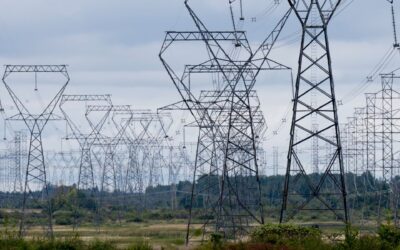Our new research shows that the macroeconomic costs of climate change are already big and are poised to get even larger over time. It’s these cumulative effects that make it particularly hard to get a handle on the full scale of potential damages. We aren’t talking about periodic shocks that undermine growth in any one year: climate change will be a drag on growth in every year. And, unless we take policy action, those costs are going to add-up in a serious way.
Modelling the costs of climate change
Damage Control is the culmination of the Canadian Climate Institute’s Costs of Climate Change series, a multi-year modelling and research project that aims to better understand and quantify the potential costs of a changing climate in Canada. The analysis integrates two global greenhouse gas emissions scenarios, downscaled projections from seven different global climate models, and two adaptation scenarios in a macroeconomic model of Canada’s economy. All told, our analysis simulates 84 scenarios to bound a wide range of uncertainty.
The upshot? The costs of climate change for Canada are already big—and they are growing.
Climate damages mean lower GDP
Those economic damages aren’t in some far-off future. Our analysis suggests that by 2025, the previous 10 years of climate change will have shaved $25 billion off of national GDP. In other words, the Canadian economy will be $25 billion dollars smaller than it would have been if global warming had stabilized in 2015.The economy still grows at a fast clip, but the cumulative drag adds up.
That’s a big number. To break it down, $25 billion represents half a year of growth in the Canadian economy, $630 per person of lost national income, is equivalent to more than twice the cost of the November 2021 floods that ravaged British Columbia, and is 12 times larger than all insured losses from weather-related disasters in Canada in 2021.
It’s also just the beginning. Critically $25 billion dollars isn’t just the result of climate shocks—storms, floods, fires, and more—in 2025. It represents the accumulation of impacts from each subsequent year. Our modelling simulation starts in 2015. Each year, climate impacts mean that GDP is lower than it would have otherwise been, and it grows a little bit more slowly than it otherwise would have.
That means that the costs of climate change effectively compound over time. The drag on the economy from climate impacts will accumulate even more in the longer-term, as the figure below illustrates. By 2030, GDP will be $35 billion lower than it would have otherwise been—by 2055, it will be $80 to $103 billion lower.
The true costs of climate change for Canadians will be even larger
The GDP impacts of a changing climate in Damage Control convey the urgency of the climate crisis for Canada. Yet even these large impacts tell only part of the story.
GDP masks some of the more acute impacts. It’s not just the total damages to the economy that matters, it’s also who pays for those damages. In our modelling, governments backstop the impacts of climate change by helping to rebuild damaged infrastructure and assets, paying for increased healthcare costs, and fixing damages from weather-related disasters. That diverts capital from activities that would actually drive additional growth, rather than rebuilding what we already have. But it also means that taxpayers ultimately bear the brunt of climate impacts.
Our analysis finds that all households will lose income, and low-income households will suffer the most. Low-income households could see income losses of 12 per cent in a low-emissions scenario and 23 per cent in a high-emissions scenario by the end of the century.
Furthermore, our results only represent the “tip of the iceberg” when it comes to the full range of effects to Canada’s economy and society from a changing climate. There remain many below-the-waterline risks, where climate change will likely generate even greater economic impacts, but that have too much uncertainty and complexity to quantify at this stage.
The long-term impacts of climate change aren’t yet written in stone
The economic stakes of climate change for Canada are high. Yet our analysis is fundamentally a warning, not a prediction: action now can still avert the highest costs.
Adaption—action that reduces the negative impacts of climate change like building seawalls and strengthening bridges and hydro lines—pays off big. Every dollar spent on adaptation measures saves $13-$15, including both direct and indirect economy-wide benefits. Taking proactive adaptation measures cuts climate costs in half. That means that Canada’s forthcoming National Adaptation Strategy is a hugely important policy opportunity for Canada to begin the steps to prepare for climate change and seize those very large potential savings.
At the same time, limiting further warming, while also adapting to the warming already baked in, pays off bigger. Combining proactive adaptation in Canada with global progress in reducing emissions could reduce the costs of climate change for Canada by three-quarters.
Canada is making progress. But the lessons from Damage Control are clear: maximizing economic growth—and the prosperity for Canadians that comes with it—requires taking climate policy (both adaptation and mitigation) much more seriously.








